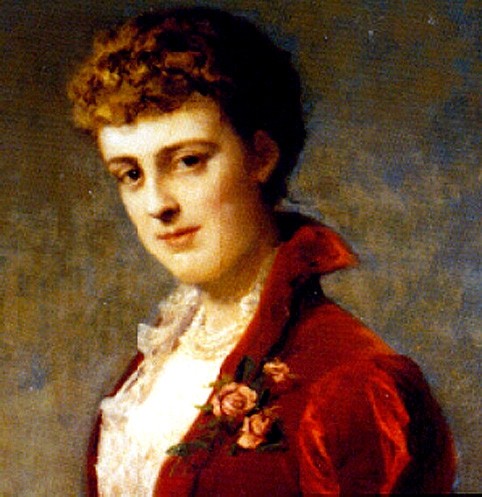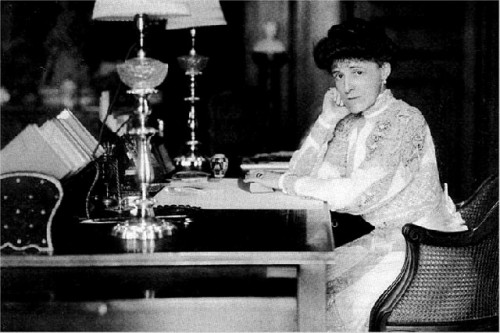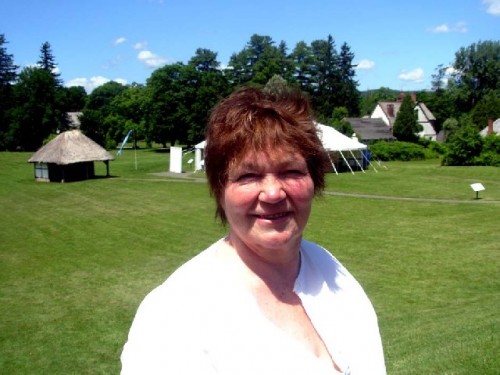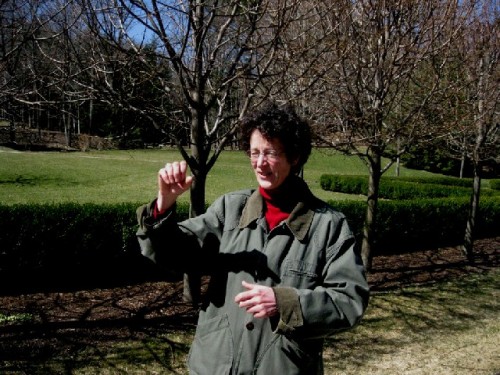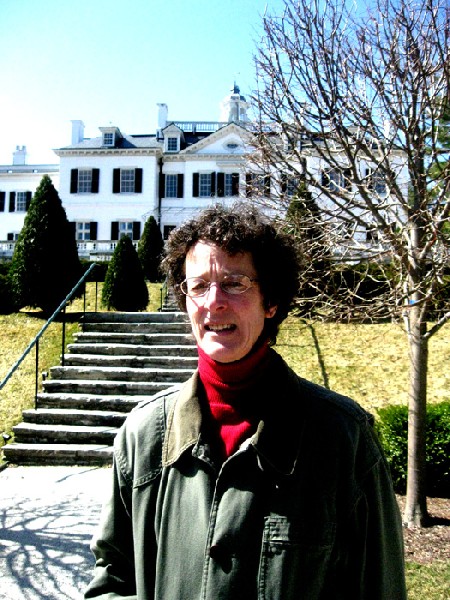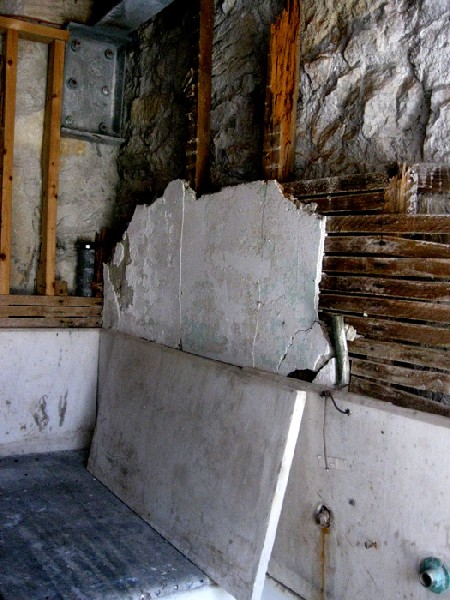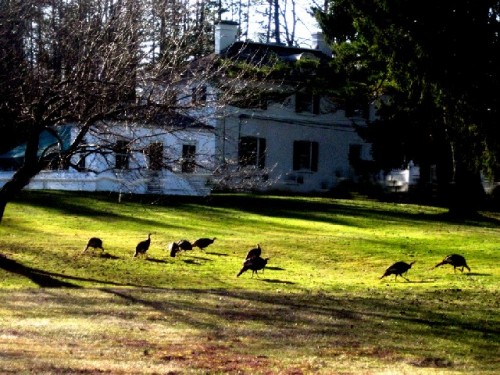Susan Wissler Discusses The Mount
The Worst Is Over But Challenges Lay Ahead
By: Charles Giuliano - Apr 04, 2010
During our extensive tour of The Mount with the executive director, Susan Wissler, there was time for an interview. A transcript of this dialogue appears below. She was open and precise about the crisis of 2008, which evoked an emotional response, as well as pragmatic about facing ongoing challenges in a time of difficulty for all arts organizations.
Charles Giuliano What was your background and education before coming to The Mount. Did you have training in art/ architecture and historic preservation?
Susan Wissler. I was an attorney in NYC for ten years. I graduated from Columbia Law School in 1986. I was an undergraduate at Brown with a major in psychology. I worked in Corporate Law primarily mergers and acquisitions.
CG Those would seem to be perfect qualifications to manage The Mount. Particularly the psychology. When did you come to Lenox?
SW I arrived at the Mount in 2001 on Labor Day as Vice President of operations. I worked under the then director Stephanie Copeland.
CG What was the state of the Mount when you arrived?
SW Restoration was in full swing on the house. The centennial year was 2002. The house was built in 1902. There was a big push to open with a bang . Up until then the Mount was shared with Shakespeare & Company. Until then it had been mostly theatrical and shared. This was the beginning of operating the Mount as a historic property. Restoration was on going but visitors to the property as a home was limited. S&Co by agreement vacated in the winter of 2001 so preparations were underway for a big bang.
CG What was your sense of the relationship with S&Co at that time?
SW I came in during the period which was the tail end of that. My understanding from a couple of pages that Scott Marshall wrote is that during that earlier period S&Co rented from the developer as a theatre company.
CG My understanding was that S&Co was offered the property for as little as $250,000.
SW Actually it was less than that. They could have bought The Mount for $160, 000. But they didn't have the money. Edith Wharton Restoration acquired the property and rented to S&C. That's when conflicts developed.
CG There is a complicated history and I have read through a lot of documents provided to me by S&Co. There is more detail than I can recall. It would make a great book project. Particularly when you consider that The Mount and S&Co. are both institutions with enormous impact on the cultural life of the Berkshires and beyond.
SW The leaders of both institutions were strong women. Tina Packer for S&Co. and Stephanie Copeland for the Mount.
CG When and how did the Mount encounter its fiscal crisis?
SW It came to a head in February, 2008. There were successive years of having to raise funds for the season. We are obligated to raise annually but hadn't hit the target amount for a number of years. The shortfall was plugged by a line of credit. The debt in 2008 reached $8 million. That included the ongoing bank debt and the cost of the acquisition of books from Edith Wharton's library.
CG What was the cost of that acquisition?
SW The Library cost $2.6 million.
CG In hindsight, one wonders why an arts institution with financial problems would make such an expensive acquisition. Of course with time having the books is a great asset but in the short term it brought the institution to the brink of foreclosure.
SW At that point of time finances were tight. The opportunity came about to acquire the library because a close friend of The Mount assisted. Some $800,000 was made available on very favorable terms. A close friend of the Mount perceived this as an opportunity and, as part of the deal, provided immediate operating funds that were desperately needed. The point was that owning the library could be leveraged as a fund raising device. The board felt we were not strong enough to pull it off.
CG Why then did they proceed with the acquisition?
SW Things were difficult but the executive director, Stephanie Copeland, had a good record for bottom of the ninth home runs. She was a good fund raiser. The pressure and tensions were enormous. There seemed to be no more moves. The board made a gutsy decision to go public with our plight. That flies in the face of the traditional approach to fund raising. Donors like to hear good news not bad news. So we went public with the news that we were facing foreclosure. We had missed several interest payments in a row. The bank issued a notice of foreclosure. They sent in the men in dark suits to inventory everything. We were really close to shutting down. We had no staff left except what was essential for maintenance. It was like sitting on an empty ship.
CG What was that like for you?
SW It was tough. There was a feeling of complete futility. We were reporting to the bank on a weekly basis on what we were allowed to spend.
CG What did it mean and how did you start to turn it around?
SW What it says is that the promise was still unrealized. As an organization we were still so young. We decided to get the message out with a press release that was picked up and run by AP. It was met with immediate and overwhelming response. Some of the staff that had been let go were coming back as volunteers to help out. It was broadcast on PBS.
The first call came from somebody who heard it on the highway in Minneapolis and pulled over to contact us. Somebody from Seattle was our second call. It was exhilarating. We were barely organized for fund raising and had no staff to take pledges. It is a fairly complicated structure to set that up. We decided to set a goal of $3 million and not process checks and credit cards until we reached it.
After awhile there was a mountain of checks and it went on and on. We raised enough to keep the bank off for three to seven months. Most people who sent money didn't read the fine print of why we did not cash their checks. We raised $1.4 million. The gifts ranged from as small as five dollars to the largest which was $50,000.
We raised $1.4 million by focusing on one step at a time. The staff was great and I have made it key to the culture here that, although I haven't always had money to give them, we have been completely honest. The staff always knows what to expect and when they will be paid. That has gone a long way.
CG What is the current state of the staff?
SW The staff is currently at 60% of what it was in the past. We have seven full time employees and just added deputy director, Lise Dube-Scherr. That means that now I am much more full time into fund raising.
CG Who is the primary holder of the debt?
SW Berkshire Bank. By rolling back we got through the 2008 season. We negotiated a restructuring agreement primarily through one major gift we had been cultivating slowly. $750,000 came in May of 2009. In honor of Alice M. Kaplan. The Kaplans are philanthropists. Their resources come from Welshes Grape Juice. The gift was from one of the siblings in honor of their mother who was a champion of the arts. On their refrigerator they had a quote of Wharton's that reminded them of their mother. The quote is from Wharton's biography Backward Glance. The donor had never visited the Mount.
That gift came in the nick of time. It reduced debt 40% or $3.7 million and shaved off a lot interest. We had a prearranged offer and agreement of interest payment with the bank to a reduction and fixed interest was shaved off.
CG What is the current debt status?
SW Current debt is $5.1 million. It's amazing given the economic climate we faced. It's amazing what we accomplished but there is also an awful lot yet to be done. Like our cultural counterparts we have a limited season. It is now that time of year when it is imperative to replenish cash reserves. It is time for another major funding push.
CG What is the annual budget?
SW The budget is about $2 million. We have been pretty aggressive to reposition the Mount as a historic site and as a thriving cultural center. We are hoping this year to lay claim to that. The Mount will host its first annual writer's festival in July 23-25.
CG Will that entail special funding?
SW We need to raise between $25,000 and $50,000. There is a pretty exciting lineup.
CG How do you break down the annual budget of $2 million?
SW Maintenance is about, excluding utilities, $250,000. Salaries are between $500,000 to $600.000. We employ up to a staff of 30 to 40 in the summer including, grounds, books store, and cafe.
CG What do you charge visitors?
SW We charge $16 and children under 18 are free. We are offering season memberships. Members are a new program that until now has languished.
CG What are the privileges of membership?
SW There is access to the grounds which are very beautiful. You can come and dine on the terrace. There has been a nice response from garden lovers. There is a café and jazz on Friday and Saturday with local musicians.
Last summer we brought a Wharton play back to the drawing room with Xingu It was adapted from a short story of Wharton's by Dennis Krausnick (The husband of Shakespeare & Company founder, Tina Packer). This summer we will also present one of Dennis's adaptations Summer. She called it her "Hot Ethan." It is a story of a young woman's sexual awakening and takes place in the Berkshires.
CG It sounds steamy.
SW It has a few steamy passages. It is too risqué to be read in school which is why students ream Ethan Frome. It entails such hot issues as teenage pregnancy and abortion.
CG That sounds like a lively production and it is good to have theatre back at The Mount for a second season. It seems like you are trying to have more programming both in the Drawing Room of the house as well as in the Stables which you hope to renovate in the future. Wharton is truly a remarkable figure; the best selling and most prosperous American writer of her generation. Would you regard her as a feminist?
SW Wharton would not call herself a feminist but she and Teddy
Roosevelt were close friends. He wrote to her that "We are both self made men." Imagine. She was a take charge kind of person. She was a good business woman with a writer's views on issues. But regarding feminism she didn't dwell on it.
CG It is ironic that both the Mount and S&Co are in fiscal crisis. This past year S&Co, announced a debt of some $10 million. In 2008 you faced a debt of $8 million. In the past months S&Co has made progress. A couple of months ago I asked Tina Packer "Are you out of the woods?" So I am asking you the same question.
SW Are we out of the woods? No, there is light at the edge of the clearing but a long way yet to go. We will have continually financially tense moments until we have an endowment. We said jokingly after the Kaplan gift that the patient is out of operating room and moved into intensive care. The Mount is stabilized and on the right track fiscally and programmatically.
CG How would you describe your mood coming into the current season?
SW We feel great about the season we have planned and confident that attendance will be good and that programming will be well received. But there is money that has to be raised to get there. So I won't deny the pressures.
CG There have been some intensely emotional moments during this interview. Clearly there are deep passions and commitments involved. As well as enormous pressures and responsibilities. How do you feel about that?
SW I've got one of best jobs in world. Everyone should be so lucky to come onto such a beautiful property every day.
CG How many people visit and what is your attendance goal this season?
SW The current annual attendance is 26,000 to 27, 000 and the target for 2010 is 30,000.
CG What revenue does attendance generate?
SW Box office as well as the book store and café generate about $750,000. Which is about a third to half of the budget. For the remainder we have to fund raise. It is a matter of finding people who feel deeply personal about The Mount and Wharton. We have an advantage over our Berkshire colleagues as we are not bound to the region.
One year we received a half million from someone who loved the gardens. Another year someone gave because they were reminded of Wharton in a very personal way.
There is such breadth to Wharton that it makes my life easier. It sustains us in a way that is slightly different from other Berkshire colleagues. Wharton's writings are portable and not just dependent on the Berkshire region.
CG You did a recent fund raiser in New York how did that go?
SW It went very well. Now we are working on an event at the Boston Athenaeum and another for the Corcoran in Washington, D. C. We are taking our dog and pony show on tour.
CG With the 2,500 books from the Wharton library now on site, about half of what she collected and annotated, you have talked about creating a research center. Much of the archival material and letters are at Yale. Of course that is for the future but have you explored these possibilities?
SW Yes we have had discussions with Yale and other potential collaborations. Research for the library is huge.
CG As you move forward do you have a five year plan?
SW Actually, we are working on a three year plan and this summer we will open up the thinking process for a longer plan.
Some three hours passed quickly and fruitfully.
It was 5 pm as we packed up gear and headed back along the beautiful wooded road to the office building. It had been such an intense and emotional experience. Just as we were driving off Susan pointed to a gaggle of turkeys munching on the lawn. How wonderful to come to such a special place each day. Thanks Susan for sharing it with us.

